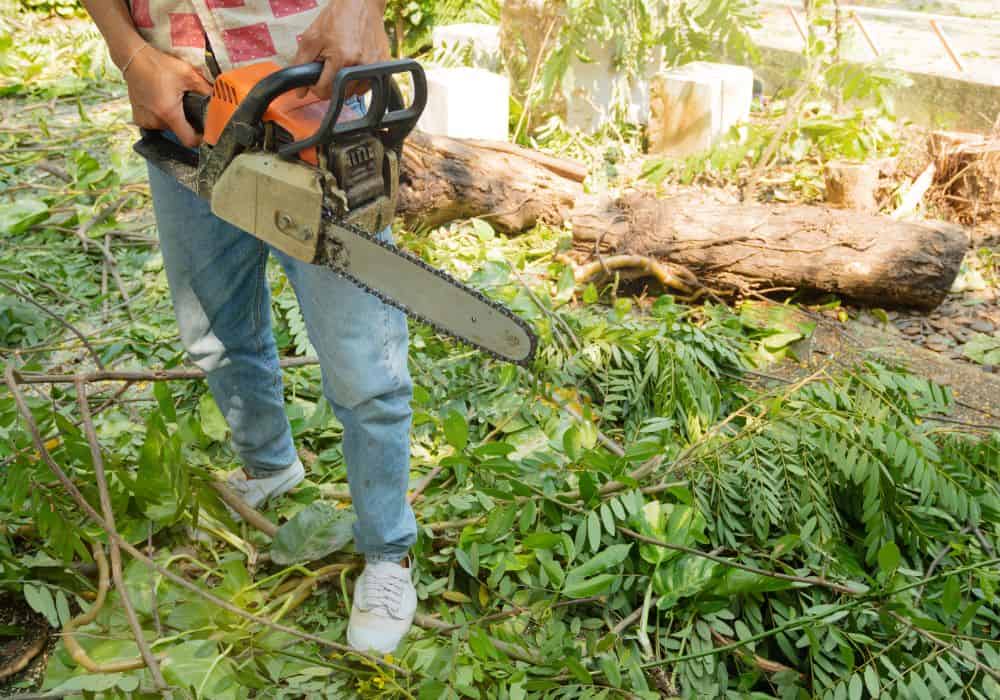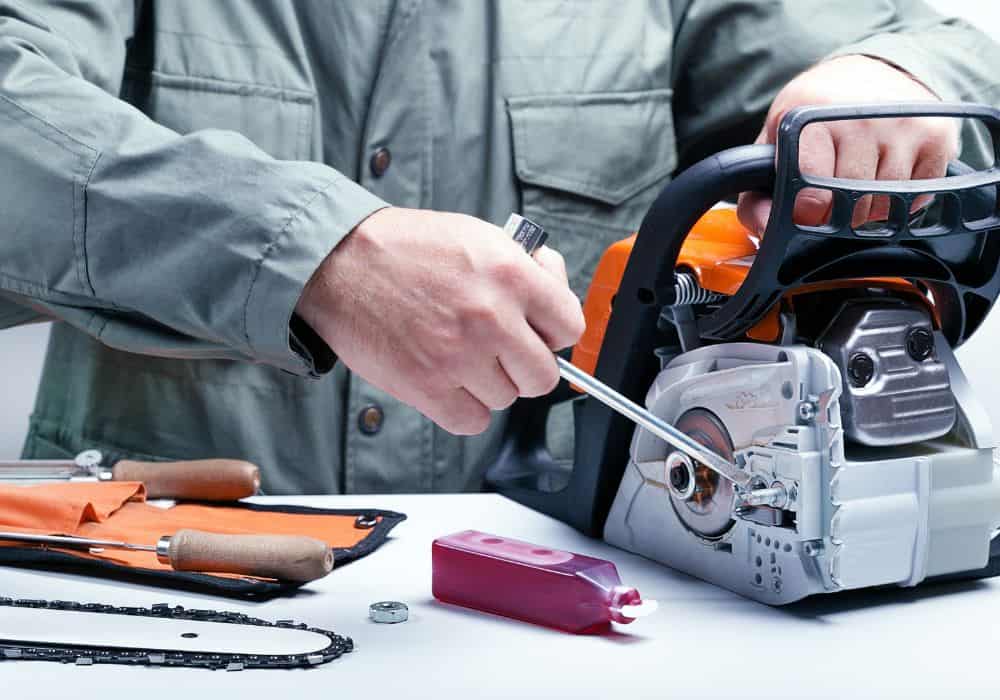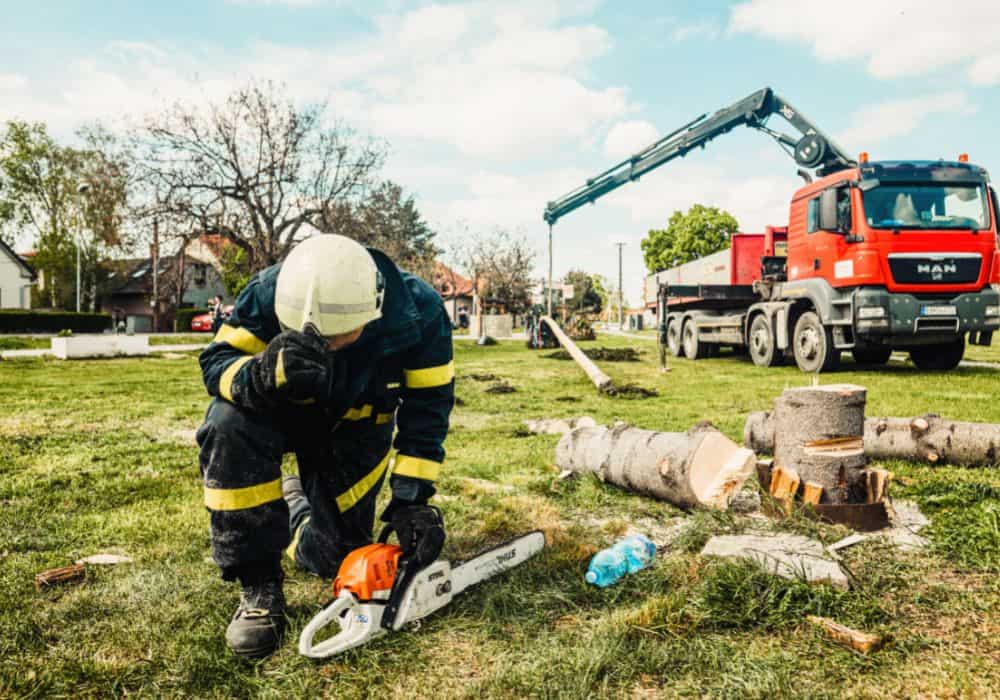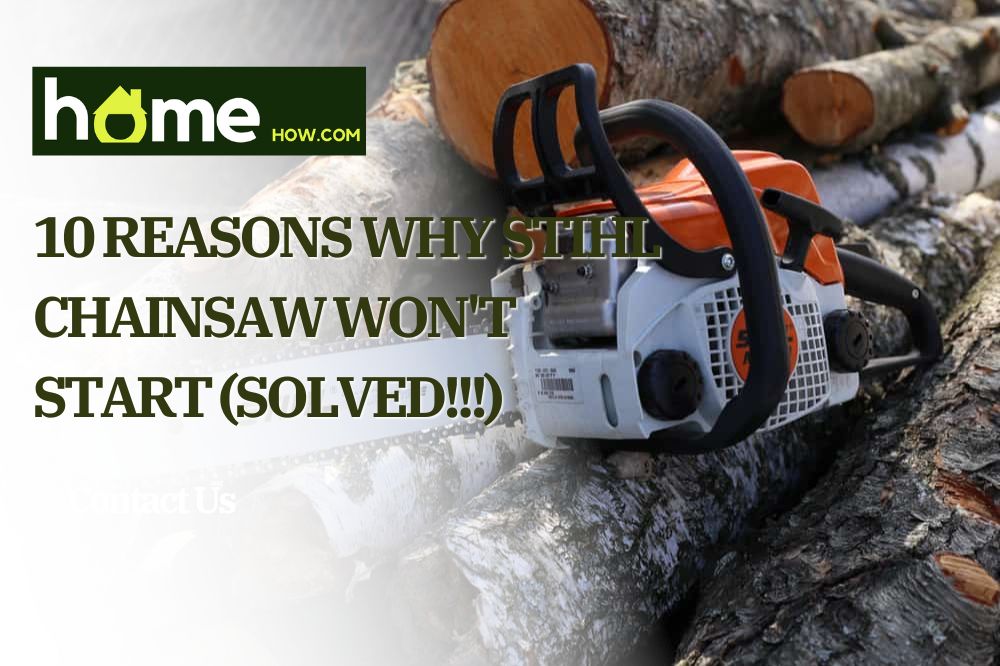You want to clear the branches after a storm or need to cut wood for a bonfire, but your Stihl chainsaw won’t start. You’ve tried putting in fuel, used the choke correctly, and cranked the starter cord several times, all in vain.
The reason could be a plugged air filter, a clogged fuel line, or a faulty spark plug. We’ve put up this article to assist you in identifying the reasons behind a stalled Stihl chainsaw and have provided an adequate solution, so you don’t have to search elsewhere.
Common Issues and Their Solutions
Here’s a list of the common reasons your Stihl chain saw won’t start, alongside the approach you can adopt to resolve the issue.
1. Residual Fuel
Unless you are a DIY enthusiast interested in woodwork, the Stihl chainsaw of an average homeowner will sit in storage for weeks, unattended and poorly maintained, leading to its malfunction.
One of the most common reasons for the stalled chainsaw is the old gas left as a residue in the chainsaw’s fuel tank after use.
Typically, ethanol is used as fuel to power this chainsaw. While ethanol doesn’t affect the efficiency and performance of big engines, its adverse effects on small engines can result in mechanical issues.
The left fuel in the chainsaw’s fuel tank brings in water vapors. Over time, water collects in the tank and mixes with the ethanol, turning into a sticky vanish capable of clogging the fuel system to the engine.
This mixture of bad gas also causes blockage of the fuel filter. The bad fuel sitting in the tank can puncture or block the fuel line, which can be cleaned using a carburetor cleaner and blowing compressed air through the fuel line.
The best way to avoid this situation is by using the right fuel for your chainsaw.

Industry-leading experts at Stihl themselves recommend a mix of ethanol and the Stihl 2-cycle oil mixed in a ratio of 50:1. Gas buildup occurs due to high ethanol content in the fuel. The trapped gas should be vented out using the following steps.
- Lift the lock lever to set the fuel cap free.
- Twist the fuel cap 1/8th of a turn with a slow pace.
- Slowly twist the cap further to vent out pressure.
- If you notice significant venting, avoid opening the fuel cap and let the chainsaw cool before attempting to open the fuel cap again.
If your chainsaw is left unattended for an extended period, adopt the process mentioned below for effective results.
- Drain the old fuel out from the chainsaw fuel tank.
- Fill it up with the fresh gas mixture of ethanol and oil.
- Add a fuel additive to the mix to keep the moisture at bay and clean the gas tank.
- Hopefully, at this point, your chainsaw will quickly start with a single starter rope pull.
Using an incorrect oil or running the ethanol on straight-up gas results in engine malfunction and subsequent failure. Only ISO-L-EGD and JASO M345 FD-certified oils should be used with ethanol.
Stihl offers ethanol-free, pre-mixed fuel to its customers, saving time and effort to make the perfect fuel mix for the chainsaw.
2. Faulty Spark Plug

When you rev your chainsaw, the spark plug produces a spark necessary to start the engine. Over time, the spark plug wears out with use. It is recommended to replace the spark plug once a year. Regular chainsaw users need a replacement once a month.
Other signs of a spark plug that needs replacement include broken porcelain, burnt electrodes, or a wholly burnt spark plug. If you don’t find any of the issues mentioned, the reason may be dirt and debris collection, preventing the spark plug from functioning correctly.
You can use a wire brush to scrape off the gunk and restore its function.
3. Clogged Air Filter
These handy yet powerful chainsaws work like a conventional gasoline-powered internal combustion engine. Likewise, the chainsaw has an air filter to provide the engine with the necessary air for the engine to burn the fuel.
While the air filter keeps dirt and debris from entering the engine, the air filter itself has a threshold, limiting its capacity to stop a certain amount of dirt before getting clogged.
The excess dirt and debris entering the air filter can pass into the carburetor, ultimately ending up in the engine and causing damage. Inspect the filter for any form of wear and replace it if necessary.
On-time air filter cleaning and adequate maintenance of your chainsaw can prevent debris buildup, saving you the hassle of figuring out what to do when the chainsaw stalls. A clogged filter prevents the Stihl chainsaw from starting up.
Clean the air filter according to to use and replace the air filter at least once a year to ensure maximum efficiency. Engine overheating is another adverse effect due to a clogged air filter.
Avoid running the chainsaw with a damaged filter or without a filter at all. You might be tempted to complete the task on time, especially when running late, but running the chainsaw like this will only result in engine damage.
You can refer to the operator’s manual to better understand how to use and maintain the chainsaw safely. Information like the recommended air filter is provided if you are confused about finding a compatible air filter.
4. Faulty Ignition Coil
If your spark plug is in good shape, but there is no spark, the fault in the ignition coil winding might be the cause. Due to this issue, the spark plug fails to receive the required voltage. You can use an ohmmeter to check whether there are any circuit breaks and replace the ignition coil if the break is identified.
5. Clogged Fuel Filter
Similar to the air filtration system, the fuel system of the chainsaw has a fuel filter to prevent dirt and other foreign objects from damaging the engine.
These fuel filters need to be changed annually. They become clogged, restricting the fuel from going into the engine and putting it to a halt.
6. Primer Bulb
While operating the chainsaw, the primer bulb can break or get cracked. This prevents the bulb from filling up, further restricting the fuel flow to the carburetor. A bad primer bulb could be the reason for your Stihl chainsaw malfunction.
7. Clogged Carburetor
The carburetor mixes the exact amount of gas and air to start the combustion in the engine’s cylinder. A clogged and dirty carburetor can keep your chainsaw from starting. Anyone with little mechanical knowledge can take the carburetor apart and clean it with a carburetor cleaner.
Buying a carburetor repair kit can assist in keeping the chainsaw’s carburetor in good shape. If the carburetor fails to function after cleaning, replace the carburetor with a new one.
8. Flooded Engine

Engine flooding occurs when the choke is up, and the pulley is revved several times. The situation also occurs when your Stihl chainsaw is switched off, and you have tried to start the engine multiple times. Here’s a quick guide to fixing engine flooding.
- Put the lever in the ‘0’ position.
- Ensure the choke position is adequate, and remove the spark plug.
- Try starting the engine at least 8 to 10 times.
- Clean the spark plug before putting it back in.
- Use the throttle position to your leverage and start your Stihl chainsaw.
You can also start a flooded chainsaw with a cold start. Most chainsaws from Stihl come with cartridges to make cold starts easier.
9. Malfunctioning Spark Arrestor
Over time, the spark arrestor gets coated with soot and other forms of carbon-based materials. A problem with this component prevents airflow to the engine, restricting the chainsaw from running correctly.
Clean the spark arrestor with a wire brush and replace the mesh spark arrestor screen when you see the damage.
10. Issues With Recoil Starter Assembly
It’s the recoil starter revving the crankshaft to start the engine. If there is an issue with the pulley or crankshaft, your Stihl won’t start. Here’s how to inspect and fix the assembly.
Ideally, when the starter rope is pulled, the tabs grab the engine’s hub, providing enough torque to start.
Releasing the string rewinds the rope back on the pulley. If you have identified a broken component in the assembly, it’s best to replace it if you want to use the chainsaw.
Besides the causes mentioned above, there are still many reasons, like a rewind spring malfunction, faulty ground wiring, issues with the master control lever, or a failed engine.
Bottom Line
We have listed the most common issues you can face with your Stihl chainsaw, rendering it non-functional. Dedicating your time to research and gathering the correct information can undoubtedly assist you in fixing these issues on your own.
Feel free to ask if you have any questions in mind right in the comments so we can reach out to you. Still, if you cannot find the cause of the malfunction, it is best to take them to your nearest Stihl dealer for repair or replacement.
